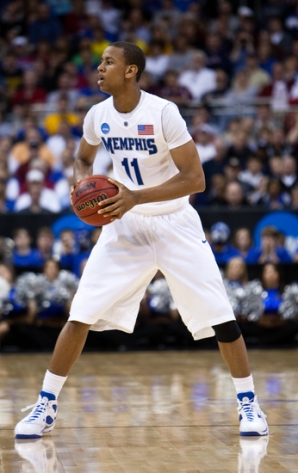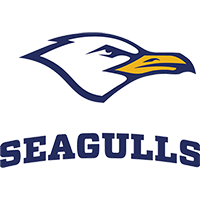
Kyle Nelson
Wesley Witherspoon's career at Memphis has been a series of dramatic highs and lows. Coming off of an impressive sophomore season where he emerged as one of the nation's most versatile players, few thought that he would stay past his junior year. A disastrous junior campaign temporarily derailed his NBA hopes, however, as he now he looks to bounce back as a senior and lead a talented, but inexperienced Memphis team to an NCAA Tournament run.
From a physical perspective, there is little else to say about Witherspoon that has not already been said. He passes the eye test and then some, with excellent size for the perimeter at 6'9 and his long wingspan, but he has failed to significantly improve his skinny 209-pound frame since arriving at Memphis. While he is not an elite athlete by any measure and he struggled through injuries as a junior, he is best described as fluid and most likely around average at the next level.
What changed significantly since we last wrote about Witherspoon has been his role on the offensive end of the floor. For one, he averaged just nine points per game as a junior, which is only 15.1 points per 40 minutes pace adjusted. That being said, while his possessions dropped significantly, he actually developed into a more efficient scorer.
According to Synergy Sports Tech, most of Witherspoon's possessions come as a spot-up shooter. By the numbers, he once again had a solid year, making 40% of his 2.5 attempts per 40 minutes pace adjusted. His mechanics are a tad compact and his release point could be higher, but he seems to have found the shooting touch that he lacked as a freshman, albeit in a limited sample size. He also showed an increased willingness to utilize screens in order to get open in catch-and-shoot from mid-range. That being said, he still struggles to get his shot off if not left open, making just one of his 14 guarded attempts according to Synergy.
He shows some ability to operate solo from mid-range, as well, showcasing solid ball handling abilities relative to his size and a nice pull-up jump shot that he utilized at times.
Operating as a face-up power forward for Memphis, Witherspoon is a solid mismatch threat attacking defenders with his straight line dribble, getting to the free throw line at a nice rate. He isn't very effective when forced to change directions with the ball, however, as he still exclusively drives left and he is still far too weak to withstand or finish through contact around the basket. Furthermore, he continued to display a propensity to develop tunnel vision off of the dribble, which resulted in turnovers and bad decisions.
He regressed on the offensive end as a junior, so scouts will be watching to see if he can earn minutes a far deeper backcourt rotation by continuing to score efficiently while making better decisions with the ball.
Though he still uses his length well to interrupt passing lanes, Witherspoon is a poor defender due to his average lateral quickness and physical toughness. He's typically very upright in his stance, making it difficult for him to stay in front of quicker perimeter players. This is an area he'll have to show better potential in to prove he can guard small forwards in the NBA. While Witherspoon can adequately stay with Conference USA's plethora of undersized power forwards, he usually struggles when matched up with more talented players because of his lack of strength, mobility and toughness.
While all indications are that he's healthy and that he is entering his senior season with a renewed focus, Witherspoon will likely come off of the bench for the second consecutive season. He will be competing for minutes in a talented backcourt including Joe Jackson, Will Barton, and Adonis Thomas, so it would not be surprising if he once again operates as a face-up 4. Regardless of position, Witherspoon will need to emerge as a veteran leader for Memphis while continuing to make shots and get to the free throw line, as well as show that he can defend his position adequately to attract the interest of NBA scouts.























Comments